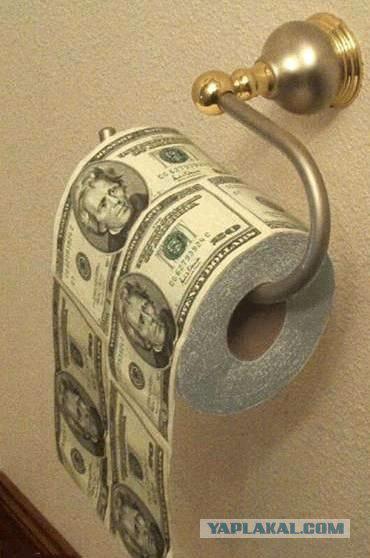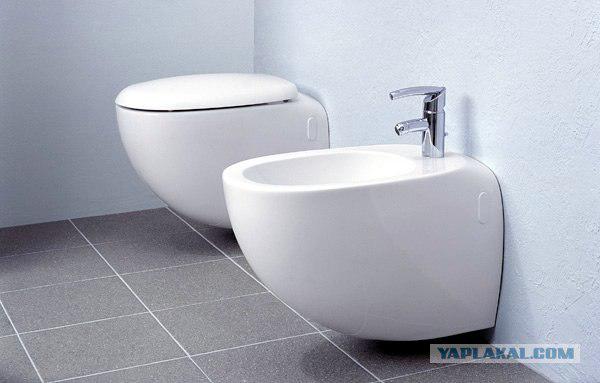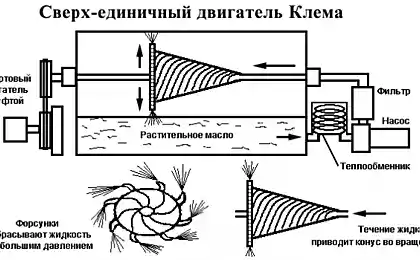731
The excuse to wipe gentlemen?
Today the production of toilet paper - a multibillion-dollar business!
Toilet paper in 1391, was originally produced in China for the use of the Emperor and each sheet size 5x7.6 cm. It was first produced in China, raw silk.
In the IX century, an Arab traveler, who visited China was shocked: "The Chinese did not care about cleanliness, - he wrote - they do not use water, but only wiped with paper».
The first mention of this product date back to the year 589 BC, when Chinese scholar Yan Chzhituy wrote: "I have warned against the use of toilet paper to quotations from the Pentateuch (U-Ching), or the names of Zion».
In the XIV century the volume of production of toilet paper in China were already quite industrial. One of the records in 1393 stated that for the needs of the imperial court produced 720,000 sheets of toilet paper (size about 5x9 cm). Personally Hongwu Emperor and his family were made of 15 000 sheets of special soft, scented toilet paper spices.
At the same time in medieval Europe in the course were still hay, straw, grass and old rags. [Next]

In Russia, production of paper was born 14 centuries later, under Tsar Alexei Mikhailovich. However, their use of health, she found only 200 years ago, in a period of rapid development of the paper industry. XX century finally formed its appearance and quality requirements. At the Court of consumers were offered a toilet paper with floral color, corrugated, pupyrchatoy, double and single, with a fancy pattern and dazzling white.
Zeth Wheeler patented perforirovnnuyu wrapping paper rolls in 1871. By 1874 he had - his own business, a rolled paper packaging company, but the company was not able to make a profit. In 1877, Wheller, began selling perforated Toilet paper ('Standard') on a roll. Paper is sold in plain brown wrappers, and was quite comfortable in American bathrooms, which at that time were very small.

Of course, the material is determined by the place of residence. Before the advent of toilet paper in the coastal regions are very popular shells of mussels. If you are lucky enough to live in Hawaii, you would use the good old shell of coconuts. If you were born in the royal family, like Louis XIV, is applied to wool or lace fabric.
In India and the Arab countries, and now the most popular uses only the left hand, since the right is used exclusively for food.

If anyone knows Bidet (fr. Bidet) - a small bath with a fountain to wash the external genitalia and anus; usually installed next to the toilet; there are models, combined with a toilet, there are a showerhead on a hose.
Bidet were first used in France in the XVII century. And to this day it is quite urgent kind of plumbing. Usually made of sanitary ware.
Note that podmyvanii, especially cold water, it is not only hygienic, but also the quenching procedure, in particular, prevention of hemorrhoids: in countries with a tradition caving and not wipe away the level of such diseases is much lower.

In the book, the giant Gargantua François Rabelais wipe young fluffy gusёnkom.
Each instance of an American newspaper Old Farmer's Almanac has been specially holed - after reading to hang it in the bathroom and used for its intended purpose.
Industrial production of paper intended solely for use as a toilet, was launched in the US in 1857 by Joseph Gayetti. Gayetti name was printed on each leaf.
Swabian entrepreneur Hans Klenk, founder of the famous company is now Hakle, too, did not hesitate to use his name. His first advertising slogan was: "Demand rolls Hakle, and you do not have to say the word" toilet paper. " And this at a time when the British euphemistically called the toilet paper "paper rollers».
In most European countries the best selling white toilet paper, but in France - why something pink. A Portuguese company produces toilet paper black.
Imagine that you are driving on the motorway width of six meters at a speed of 110 km / h. That is exactly what made the paper - 1,800 meters per minute, 24 hours a day, 365 days a year.
Despite all the achievements in the area (there are flavored, super soft and moisturized even aloe vera paper) - Toilet paper uses less than 30% of the world population.

Source:
Toilet paper in 1391, was originally produced in China for the use of the Emperor and each sheet size 5x7.6 cm. It was first produced in China, raw silk.
In the IX century, an Arab traveler, who visited China was shocked: "The Chinese did not care about cleanliness, - he wrote - they do not use water, but only wiped with paper».
The first mention of this product date back to the year 589 BC, when Chinese scholar Yan Chzhituy wrote: "I have warned against the use of toilet paper to quotations from the Pentateuch (U-Ching), or the names of Zion».
In the XIV century the volume of production of toilet paper in China were already quite industrial. One of the records in 1393 stated that for the needs of the imperial court produced 720,000 sheets of toilet paper (size about 5x9 cm). Personally Hongwu Emperor and his family were made of 15 000 sheets of special soft, scented toilet paper spices.
At the same time in medieval Europe in the course were still hay, straw, grass and old rags. [Next]

In Russia, production of paper was born 14 centuries later, under Tsar Alexei Mikhailovich. However, their use of health, she found only 200 years ago, in a period of rapid development of the paper industry. XX century finally formed its appearance and quality requirements. At the Court of consumers were offered a toilet paper with floral color, corrugated, pupyrchatoy, double and single, with a fancy pattern and dazzling white.
Zeth Wheeler patented perforirovnnuyu wrapping paper rolls in 1871. By 1874 he had - his own business, a rolled paper packaging company, but the company was not able to make a profit. In 1877, Wheller, began selling perforated Toilet paper ('Standard') on a roll. Paper is sold in plain brown wrappers, and was quite comfortable in American bathrooms, which at that time were very small.

Of course, the material is determined by the place of residence. Before the advent of toilet paper in the coastal regions are very popular shells of mussels. If you are lucky enough to live in Hawaii, you would use the good old shell of coconuts. If you were born in the royal family, like Louis XIV, is applied to wool or lace fabric.
In India and the Arab countries, and now the most popular uses only the left hand, since the right is used exclusively for food.

If anyone knows Bidet (fr. Bidet) - a small bath with a fountain to wash the external genitalia and anus; usually installed next to the toilet; there are models, combined with a toilet, there are a showerhead on a hose.
Bidet were first used in France in the XVII century. And to this day it is quite urgent kind of plumbing. Usually made of sanitary ware.
Note that podmyvanii, especially cold water, it is not only hygienic, but also the quenching procedure, in particular, prevention of hemorrhoids: in countries with a tradition caving and not wipe away the level of such diseases is much lower.

In the book, the giant Gargantua François Rabelais wipe young fluffy gusёnkom.
Each instance of an American newspaper Old Farmer's Almanac has been specially holed - after reading to hang it in the bathroom and used for its intended purpose.
Industrial production of paper intended solely for use as a toilet, was launched in the US in 1857 by Joseph Gayetti. Gayetti name was printed on each leaf.
Swabian entrepreneur Hans Klenk, founder of the famous company is now Hakle, too, did not hesitate to use his name. His first advertising slogan was: "Demand rolls Hakle, and you do not have to say the word" toilet paper. " And this at a time when the British euphemistically called the toilet paper "paper rollers».
In most European countries the best selling white toilet paper, but in France - why something pink. A Portuguese company produces toilet paper black.
Imagine that you are driving on the motorway width of six meters at a speed of 110 km / h. That is exactly what made the paper - 1,800 meters per minute, 24 hours a day, 365 days a year.
Despite all the achievements in the area (there are flavored, super soft and moisturized even aloe vera paper) - Toilet paper uses less than 30% of the world population.

Source:























